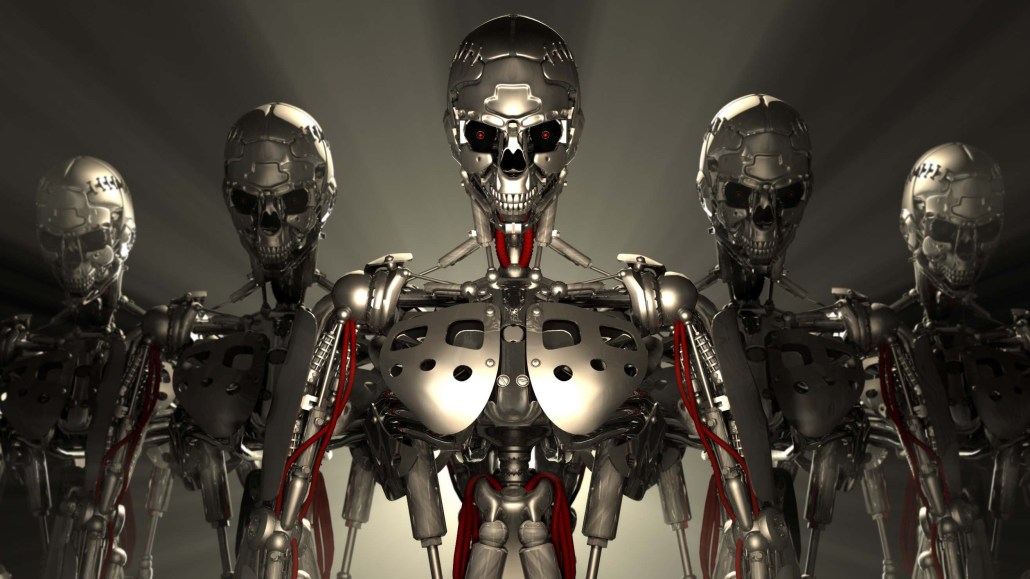Save 50% on a 3-month Digiday+ membership. Ends Dec 5.

The ad tech world recoils at the notion that the move to automated ad systems means replacing humans with robots. But that prospect doesn’t mean there won’t be some bare-knuckles competition.
A sign of things to come is unfolding in the Netherlands, where the largest Dutch morning newspaper De Telegraaf makes its salespeople compete directly with programmatic channels, and it factors things like salaries and other overheads into its ad decisions. This is yield management taken to the extreme. If the paper can make more money selling ads through exchanges or other programmatic deals for a $4 CPM than it does from direct deals for $8, it’ll do that instead. As the philosopher Rasheed Wallace might put it: Data don’t lie.
“Publishers, especially news publishers, need to reduce their cost of sales if they want to be relevant in the next decade,” explained De Telegraaf’s head of revenue development, Martin van der Meij. “It’s a matter of surviving.”
The fact is, technology will always be faster and more efficient than people – just ask John Henry – and that means people will always be expensive by comparison. Direct sales forces might be good at selling high-ticket items, but publishers have to pay them hundreds of thousands of dollars a year to do so. Automated technology, on the other hand, might sell ads for less, but it can do it at a fraction of the cost.
This more Darwinian view is a variation on the rising-tide-lifts-all-boats perspective often presented. It is also a somewhat different approach to the “barbell” strategy now being adopted by many publishers, with which direct, “premium” sales efforts are separated from programmatic ones. At De Telegraaf, all ad opportunities are optimized the same way– based on how much net revenue they generate for the publisher’s bottom line. It’s a numbers game, essentially, and whatever channel achieves the highest margin wins.
But according to van der Meij, pitting the company’s direct sales team against programmatic channels has forced it to raise its game. When sales staffers realized they couldn’t win on price alone, they began to put together better campaigns, he said.
Unfortunately, that won’t save all of them. “We’re trying to automate as much as we possibly can, and that means sales teams will get smaller,” he said. “If you’re selling stuff that can be automated, your job will eventually be obsolete. Everything that’s standardized will be traded automatically someday.”
Ad position: web_incontent_pos1
Rubicon Project founder Frank Addante thinks more publishers should, and will, move in the same direction as De Telegraaf. “A direct sales force is the most expensive channel to take a product to market,” he argues.
Rather than overprotecting direct sales forces, publishers should be more open to selling through automated channels and take advantage of efficiencies and cost savings as a result, Addante said. Given that his company helps facilitate automated ad trading, that view might be taken with a pinch of salt.
It’s worth noting that De Telegraaf is in a different position than many U.S. publishers, however. It operates in a drastically smaller market than national papers in America, which makes the efficiencies of programmatic trading even more appealing. The cost of dealing with an insertion order remains fairly consistent for publishers regardless of the size of the order. As a result, that overhead is less of a concern for U.S. publishers dealing with insertion orders worth hundreds of thousands of dollars than those in the Netherlands. It’s a benefit of scale.
As a result, it’ll probably be a couple of years until that type of model is adopted by American publishers, but van der Meij believes it’s inevitable they will. The technology is here to stay, and like it or not, publishers will have to make a way to make it work for their businesses, he said. Programmatic buying won’t always be about shifting remnant inventory.
“Bigger markets will follow a little later,” van der Meij concluded. “But to me it makes sense for publishers to optimize for profits.”
Ad position: web_incontent_pos2
Image via Flickr
More in Media

What publishers are wishing for this holiday season: End AI scraping and determine AI-powered audience value
Publishers want a fair, structured, regulated AI environment and they also want to define what the next decade of audience metrics looks like.

Digiday+ Research Subscription Index 2025: Subscription strategies from Bloomberg, The New York Times, Vox and others
Digiday’s third annual Subscription Index examines and measures publishers’ subscription strategies to identify common approaches and key tactics among Bloomberg, The New York Times, Vox and others.

From lawsuits to lobbying: How publishers are fighting AI
We may be closing out 2025, but publishers aren’t retreating from the battle of AI search — some are escalating it, and they expect the fight to stretch deep into 2026.
Ad position: web_bfu
